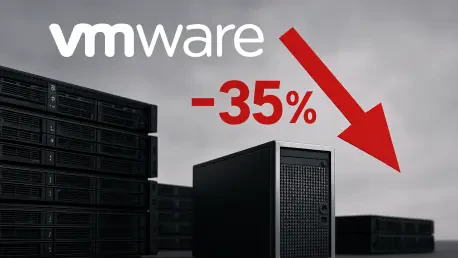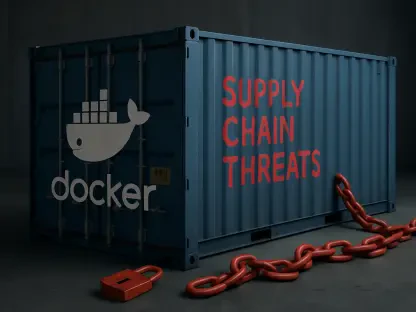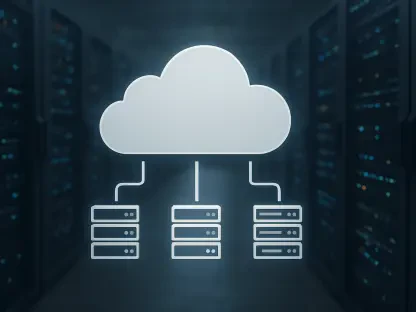What happens when a titan of technology faces an unprecedented threat to its dominance? VMware, long a linchpin in enterprise virtualization, stands at a crossroads as Gartner forecasts a staggering 35% loss of workloads by 2028. This alarming statistic, unveiled at a recent industry symposium in Australia, paints a picture of a company grappling with seismic shifts in the tech landscape. As businesses rethink their infrastructure strategies, the question arises: can VMware weather this storm, or is this the beginning of a dramatic decline?
The significance of this forecast cannot be overstated. Virtualization has been the backbone of countless organizations, enabling efficient management of IT resources for decades. Yet, with hyperscalers aggressively pushing cloud-native solutions and dissatisfaction brewing over licensing changes, VMware’s once-unshakable position is under threat. This story matters because it signals a potential upheaval for thousands of businesses worldwide, forcing IT leaders to reassess dependencies and chart new paths in a rapidly evolving market.
A Giant on Shaky Ground: What Fuels the Decline?
VMware’s challenges stem from a confluence of internal and external pressures. The company, a cornerstone of enterprise IT, has been rattled by Broadcom’s acquisition, which introduced sweeping changes to licensing models. These adjustments have not only strained partnerships with major hyperscalers but also sparked frustration among customers over escalating costs and opaque pricing structures. It’s a pivotal moment that has left many questioning the sustainability of relying on traditional virtualization.
Beyond internal shifts, the broader industry is moving toward hybrid and cloud-native environments at a breakneck pace. Hyperscalers are capitalizing on this trend, actively encouraging VMware users to abandon hypervisors for fully integrated cloud solutions. Gartner’s research highlights this migration as a key driver behind the projected workload loss, underscoring how market dynamics are reshaping the competitive landscape.
This isn’t just a theoretical concern—real-world impacts are already visible. For instance, a mid-sized financial firm recently reported reevaluating its VMware dependency after a 20% spike in licensing fees post-acquisition. Such examples illustrate the tangible pressures businesses face, pushing them to explore alternatives sooner rather than later.
Broadcom’s Influence: A Double-Edged Sword
Broadcom’s takeover of VMware has been a game-changer, but not always in a positive way. The new licensing policies, which mandate direct subscription purchases and offer portability for hosted services, have created friction with hyperscaler partners who once collaborated closely with VMware. This disconnect has opened the door for hyperscalers to position themselves as more attractive options, luring customers with promises of seamless cloud integration.
Customer sentiment reflects growing unease. Reports of declining satisfaction with support services, coupled with unexpected cost increases, have fueled a sense of betrayal among long-time users. Gartner VP Julia Palmer noted during her symposium address that these grievances are not isolated, pointing to a broader erosion of trust that could accelerate workload migration over the next few years.
Financially, Broadcom has reported strong growth in VMware product sales, particularly among top-tier clients adopting new offerings. However, this success masks underlying tensions, as smaller enterprises and those with edge deployments struggle with affordability. This dichotomy suggests a complex future where short-term gains may not translate into long-term loyalty.
Unpacking the 35% Loss: Why and Where Workloads Are Going
Gartner’s prediction of a 35% workload decline by 2028 hinges on several critical factors. Hyperscalers are aggressively targeting VMware’s customer base, promoting cloud-native architectures as superior to traditional virtualization stacks. Their influence during client engagements often sways decisions, with many businesses tempted by the scalability and flexibility of public cloud environments.
Licensing changes under Broadcom further exacerbate the situation. By altering subscription models and straining ties with hyperscaler partners, VMware risks alienating a significant portion of its ecosystem. Palmer’s analysis ranks Nutanix as the leading alternative due to its robust platform and migration tools, while public clouds follow as viable options despite concerns over cost suitability for certain workloads. Meanwhile, solutions like Microsoft’s Azure Local fall short with limitations like small cluster sizes, and open-source platforms such as OpenStack face hurdles due to a lack of skilled talent.
A case in point is a large retailer that recently transitioned a portion of its workloads to Nutanix, citing a 15% reduction in operational costs and improved support as deciding factors. Such shifts highlight the fragmented landscape of alternatives, where no single solution fully replicates VMware’s once-dominant position, yet the allure of change grows stronger.
Expert Perspective: Modernization Over Hasty Exits
Julia Palmer’s insights at the symposium offer a balanced view on navigating VMware’s predicament. “The industry’s reliance on hypervisors must transform,” she emphasized, pointing to the dangers of vendor lock-in exposed by Broadcom’s pricing tactics. While acknowledging VMware’s Cloud Foundation (VCF) 9 as a strong private cloud suite with substantial R&D behind it, she warned of rising costs, especially for remote and edge deployments, that could deter users.
Her advice steers clear of endorsing rushed migrations. A full transition away from VMware could span over three years and lacks a clear, superior replacement. Instead, Palmer advocates for a targeted strategy—modernizing specific applications within a shorter, one-year timeframe. This approach minimizes disruption while aligning with broader goals of operational efficiency.
Her cautionary stance resonates with IT leaders facing budget constraints and complex infrastructures. For many, the idea of selectively updating workloads offers a pragmatic path forward, balancing the need for innovation with the realities of existing commitments.
Charting the Path Forward: Strategies for VMware Users
For businesses reliant on VMware, the road ahead demands careful planning. Palmer suggests starting with a thorough assessment of workloads, identifying those best suited for cloud-native or hybrid setups to optimize performance. This process should prioritize long-term benefits over short-term cost savings, ensuring sustainable outcomes.
Evaluating alternatives requires a comprehensive lens. Nutanix stands out for its competitive pricing and support quality, but other options like public clouds warrant consideration based on workload fit. For those opting to stay with VMware, VCF 9 presents a compelling private cloud solution, though budgeting for potential price hikes remains critical. Diversifying platforms to avoid vendor lock-in is also essential, building resilience into infrastructure strategies.
A practical example comes from a healthcare provider that recently adopted a hybrid model, retaining VMware for core systems while shifting non-critical workloads to a public cloud. This blended approach reduced costs by 10% and enhanced flexibility, illustrating how tailored strategies can mitigate risks during this transition period.
Reflecting on a Turning Point
Looking back, the challenges VMware faced underscored a critical juncture for the virtualization industry. The projected 35% workload loss by 2028 served as a stark reminder of how quickly market dynamics could shift, driven by licensing disputes and the rise of cloud-native alternatives. Businesses had been compelled to rethink long-held dependencies, navigating a landscape fraught with uncertainty.
The lessons learned pointed to a need for adaptability. IT leaders had been encouraged to prioritize modernization, selectively updating systems while resisting the pitfalls of vendor lock-in. Whether through exploring Nutanix, leveraging public clouds, or sticking with VMware’s evolving offerings, the focus had shifted to building flexible, future-ready infrastructures.
Ultimately, this period of disruption had offered an opportunity to redefine enterprise IT. The path forward lay in strategic decision-making—assessing workloads with precision, embracing hybrid models where beneficial, and staying vigilant against cost escalations. As the industry continued to evolve, these steps promised to guide organizations through uncharted territory, ensuring resilience in an ever-changing technological era.









